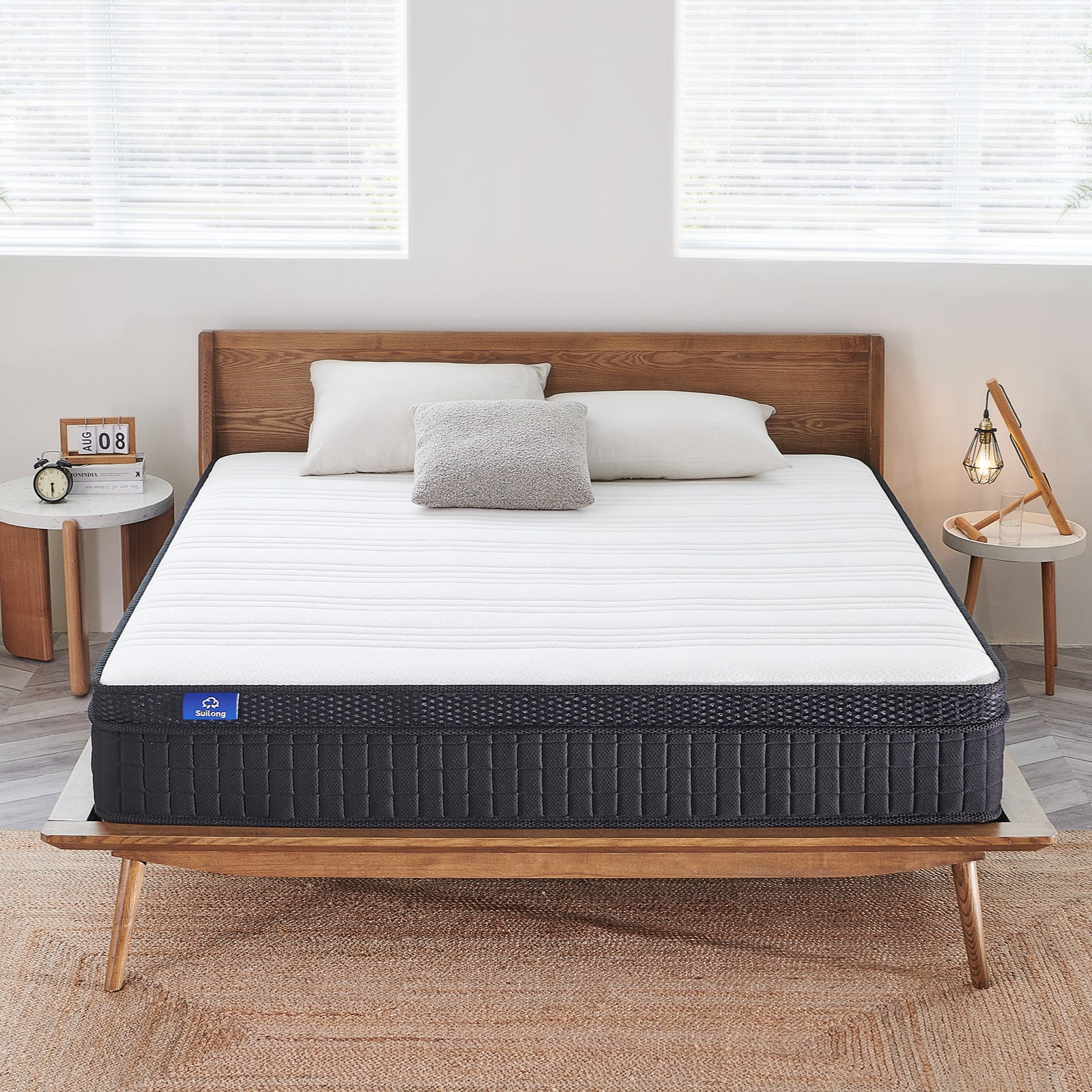Which Type Of Mattress Is Coolest?

Discover the coolest mattresses for a comfortable sleep in our comprehensive guide. Explore the benefits of memory foam, hybrid, and other types with expert insights to enhance your sleep experience.
1. Which is the coolest mattress?
As an expert in the mattress manufacturing industry, I know that choosing the right mattress is critical to getting a comfortable, cool night's sleep. On hot nights, a mattress that helps regulate your body temperature can greatly enhance the quality of your sleep. Next, I'll take you through which type of mattress provides the most cooling sleep experience and explain why.
2. The Basics of Heat Management in Mattresses
2.1 The effect of materials on heat
The material of your mattress is key in determining its cooling performance. While traditional memory foam mattresses excel in comfort, they tend to be less breathable, leading to heat build-up. In contrast, natural materials such as latex and certain advanced synthetics, such as gel-infused memory foam, dissipate heat better and provide a cooler sleeping environment.
2.2 Construction and Technology
The internal construction of the mattress is just as important. For example, mattress in a box mattresses often feature advanced airflow designs to enhance ventilation and heat dissipation. In addition, some memory foam mattresses feature open cell technology or gel layers, which are innovative designs that help to improve airflow, thereby lowering the temperature of the mattress.
Next, we'll take a closer look at the cooling characteristics of different types of mattresses and compare their advantages and disadvantages.
3. Exploring the cooling properties of different types of mattresses
3.1 Memory foam mattresses
Memory foam mattresses are popular for their ability to conform to the shape of the body. However, traditional memory foam can lead to heat build-up. Fortunately, modern memory foam mattresses use gel-infused technology or an open cell structure to ameliorate this problem, making the mattress more breathable and providing a cooler sleeping experience.
3.2 Spring mattress
The main advantage of a spring mattress is its internal airflow. Metal springs effectively dissipate heat, keeping the mattress cooler. In addition, spring mattresses often incorporate breathable natural fibres such as cotton or wool to further enhance their cooling ability.
3.3 Latex mattresses
Latex mattresses are made from natural rubber and offer excellent breathability. They naturally radiate heat, providing a natural and cool sleeping environment. Latex mattresses are ideal for consumers who are looking for an eco-friendly and cooling mattress solution.
Now, let's dive into how to choose the right mattress for hot climates and make the best choice for your specific needs.
4. How to choose the right mattress for a hot climate
4.1 The impact of your sleep habits
When choosing a mattress, it's important to consider your sleeping habits. Side sleepers may prefer a soft and adaptable mattress, such as a gel-infused memory foam mattress, while back sleepers may prefer a spring mattress that provides good support.
4.2 Consideration of personal preference
Everyone has different preferences for mattress firmness and comfort. Some people may prefer a soft and enveloping mattress, while others may prefer a firmer mattress. Considering your personal preference is an important factor in choosing a mattress for hot climates.
To help you further reduce the temperature of your mattress and enhance your sleep comfort, I'll share some practical tips next.
5. Practical Tips: Reducing Mattress Heat
5.1 Choose the right bedding
Choosing the right bed linen and mattress protector is crucial to maintaining a cool mattress. Breathable materials such as bamboo fibre or linen are recommended. They can effectively help dissipate heat and perspiration, thus keeping the mattress cool.
5.2 Adjustment of room environment
Adjusting the temperature and humidity of the room and using a fan or air conditioner can significantly improve the comfort of the sleeping environment. Keeping the room cool helps to lower body temperature and provide a better sleeping experience.
5.3 Adjustment of Personal Habits
Improving bedtime habits, such as avoiding strenuous exercise and heavy meals, can reduce body heat. In addition, choosing the right pajamas and bedding can help regulate your body temperature.
With the above tips, you can effectively improve your sleep quality. Finally, let's summarise the information shared today and think about how to choose the best mattress for you.
Summing Up
Through today's sharing, I hope you can better understand the cooling properties of different types of mattresses and choose the best one for your personal needs. Whether it's a memory foam, innerspring or latex mattress, each type has its own unique benefits. Remember to consider your sleeping habits and personal preferences to find the best solution for you.
Read more:
https://suilong.org/blogs/blogs/what-is-the-best-mattress-for-hot-sleepers
FAQs
Q1: What type of mattress is best for staying cool at night?
A1: Hybrid mattresses and those with gel-infused memory foam are excellent for staying cool, as they promote air circulation and dissipate heat effectively.
Q2: How does memory foam affect the temperature of the mattress?
A2: Traditional memory foam can retain heat, but modern memory foam mattresses often incorporate cooling technologies like gel infusion or open-cell structures to improve breathability.
Q3: Are spring mattresses good for temperature regulation?
A3: Yes, spring mattresses facilitate air flow due to their coil structure, which helps in keeping the mattress cool.
Q4: What materials are recommended for a cooler sleep experience?
A4: Natural materials like latex and advanced synthetics like gel-infused foams are recommended for their cooling properties.
Q5: How do sleeping positions influence mattress choice for cooler sleep?
A5: Side sleepers might prefer softer mattresses with cooling memory foam, while back sleepers may opt for firmer, spring-based mattresses for better air circulation.
Q6: Can the type of bed sheets and mattress protectors affect sleep temperature?
A6: Yes, choosing breathable materials like bamboo or linen for bed sheets and mattress protectors can significantly enhance cooling.
Q7: What are some ways to reduce heat in bed apart from the mattress type?
A7: Adjusting room temperature, using fans or air conditioning, and avoiding heavy meals or intense exercise before bed can help reduce heat in bed.
Q8: Is a latex mattress a good option for hot climates?
A8: Absolutely, latex mattresses offer excellent breathability and natural cooling properties, making them ideal for hot climates.
Q9: How does mattress firmness impact sleep temperature?
A9: Firmer mattresses may offer better air circulation compared to softer ones, which can sometimes lead to heat retention.
Q10: Are there specific mattress types that should be avoided in hot climates?
A10: Thick, traditional memory foam mattresses without any cooling technologies should generally be avoided in hot climates due to their heat retention properties.


















